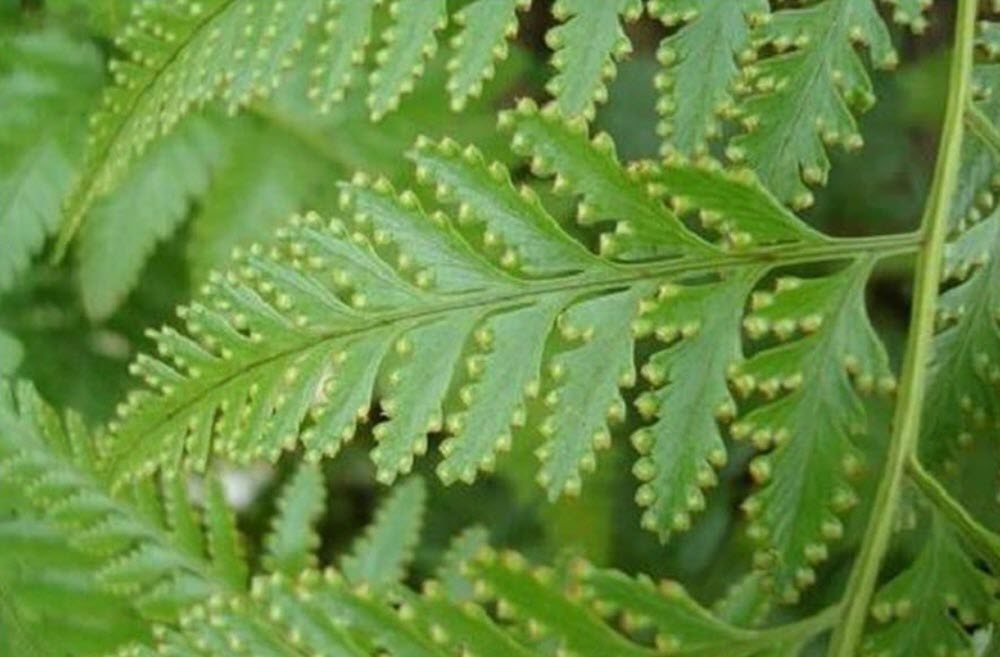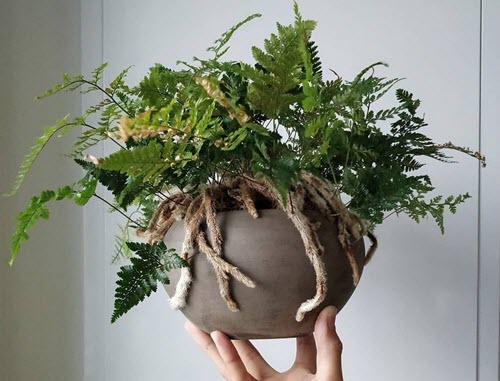Contents
Rabbit´s Foot Fern, also known as Hare´s Foot Fern, is renowned for the furry rhizomes that creep over the surface of the potting medium. The “fur” consists of long, lightbrown strands and the furry appearance is why the plant is known as rabbit´s (or hare´s) foot.

This is an epiphytic fern. In it´s native Fiji, it grows on trees, in crevices and on moss-covered rocks in the forest. It is therefore not adapted to living as a potted plant in normal soil. If you don´t want to mount it on a piece of wood or bark, mix together a peat-based potting medium and a leaf-based potting medium (roughly half of each) and fill the pot with this instead of normal soil. Davallia fejeensis ferns are often kept in hanging baskets to display their arching fronds.
When kept attached to wood or planted in suitable potting medium (not soil), Davallia fejeensis is not very difficult to care for. Compared to many ferns, it is pretty good at handling dry indoor air, but it will definitely appriciate humidity so we recommend frequent spray-misting.
Short info
Common names: Rabbit´s Foot Fern, Hare´s Foot Fern
Family: Davalliaceae
Shape: Upright
Height: Up to 60 cm
Foliage: Green
Light: Medium
Watering: Moderately year round
Temperature: 16°C to 24°C during the active growth period. Can handle down to 13°C during the resting period.
Humidity: Spray-misting is appreciated
Description
The rhizomes are covered in long, lightbrown strands that give them a furry appearance.
Grey-green stalks arise from the rhizomes and can become over 20 cm long. These stalks carry somewhat triangular fronds which are divided into three or four leaflets. The leaftlets are large, usually around 60 cm long and 45 cm wide.
Native range and habitat
Davallia fejeensis is native to Fiji, where it grows on trees and moss-covered rocks in the forest.
Caring for Rabbit´s Foot Fern
Light and position
Davallia fejeensis prefers medium light.
Temperature
Davallia fejeensis is known to do well in normal room temperature year round, and the recommended temperature range is 16°C to 24°C is.
If the temperature drops below 13°C you can expect the fronds to die. If the plant survives (it usually does if the temperature isn´t much below 13°C) new fronds will grow in spring.
Watering
 When the temperature is 13°C or above, allow the top centimetre of the potting medium to dry out before you water again. When you water, give enough water to make the potting medium moist throughout.
When the temperature is 13°C or above, allow the top centimetre of the potting medium to dry out before you water again. When you water, give enough water to make the potting medium moist throughout.
If the temperature is below 13°C for more than 48 hours, decrease the watering. Only give enough water to keep the potting medium from drying out completely.
Fronds can die and fall off if the temperature is below 13°C. New ones will form in spring.
Humidity
This fern is fairly good at dealing with dry air, but will do better in humid air and likes to be spray-misted. Keeping the air humid is especially important when the temperature is in the higher part of the range.
Nutrients
During the active growth period, apply standard liquid fertilizer twice a month.
Repotting
The best time of year to repot this fern is spring.
